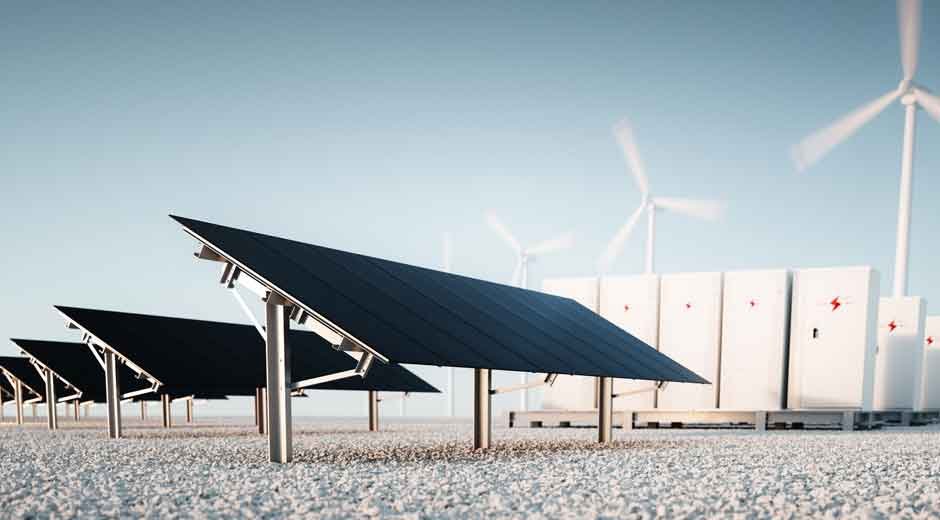Getting to net-zero emissions is a crucial goal for mitigating climate change, and various technological innovations are helping pave the way. From renewable energy advancements to carbon capture and storage solutions, technologies are rapidly evolving to reduce greenhouse gas emissions. As industries and governments set ambitious carbon-neutral targets, here are some of the key developments in technology that can help us achieve net-zero emissions.
Renewable Energy Solutions
One of the most significant advancements in technology is the expansion of renewable energy sources. Solar and wind power, in particular, have seen massive improvements in efficiency and cost-effectiveness. Solar panels are becoming more efficient, with recent innovations in perovskite solar cells showing promise in further improving performance. Wind turbines are growing in size and efficiency, capturing more energy at lower wind speeds, which makes them viable in a broader range of locations.
In addition, breakthroughs in energy storage technologies, such as advanced lithium-ion batteries and even solid-state batteries, are helping to fix one of the biggest challenges in renewable energy: intermittency. These storage solutions allow energy to be captured when renewable sources are abundant and released when they are not, ensuring a stable power supply.
Electrification of Transport
The electrification of transport is another significant step toward reducing carbon emissions. Electric vehicles (EVs) are rapidly becoming mainstream, with advancements in battery technology leading to longer ranges, shorter charging times, and reduced costs. Major automotive companies are now committing to transitioning their fleets to electric, further accelerating the shift away from fossil fuels.
Electric aircraft and ships are also in the early stages of development, with several prototypes already demonstrating the feasibility of emissions-free air travel and maritime shipping. These developments will play a crucial role in reducing emissions from one of the hardest-to-decarbonize sectors.
Compact Carbon Capture
As part of a broader strategy to reduce carbon emissions, carbon capture, utilization, and storage (CCUS) is gaining attention as a critical tool. One promising development is compact carbon capture, which focuses on modular, scalable solutions that can be deployed across various industrial sectors. Traditional carbon capture systems have often been large, expensive, and energy-intensive, but compact carbon capture technologies are designed to be more cost-effective, flexible, and capable of capturing CO2 from diverse sources, including cement plants, steel factories, and natural gas facilities.
These compact systems offer a promising solution to mitigate emissions from industries that are challenging to decarbonize, such as heavy manufacturing. By enabling on-site capture of carbon emissions, these technologies can be integrated with existing infrastructure, reducing both the costs and complexity of retrofitting older plants.
Green Hydrogen
Green hydrogen is produced using renewable energy to electrolyze water and is emerging as a critical technology for achieving net-zero emissions. Unlike traditional hydrogen, which is produced from natural gas through a carbon-intensive process, green hydrogen can be used as a clean fuel in sectors like steel production, heavy transportation, and industrial heating. Researchers are focusing on making the electrolysis process more efficient and cost-effective to make green hydrogen a viable alternative on a large scale.
Direct Air Capture
Direct air capture (DAC) is another exciting technology in the fight against climate change. DAC systems remove CO2 directly from the atmosphere, regardless of its source, and either store it underground or repurpose it for use in products like synthetic fuels or chemicals. While still in its infancy, DAC technology has the potential to significantly reduce atmospheric carbon concentrations, making it a key tool for achieving net-zero targets.
Artificial Intelligence and Data Analytics
Artificial intelligence (AI) and data analytics are also playing an important role in the transition to a net-zero economy. AI can optimize energy use in real-time, reduce waste, and improve efficiency across various sectors, including manufacturing, agriculture, and logistics. By looking at vast amounts of data, AI can help identify opportunities for emission reductions, predict energy consumption patterns, and design systems that maximize renewable energy use.











